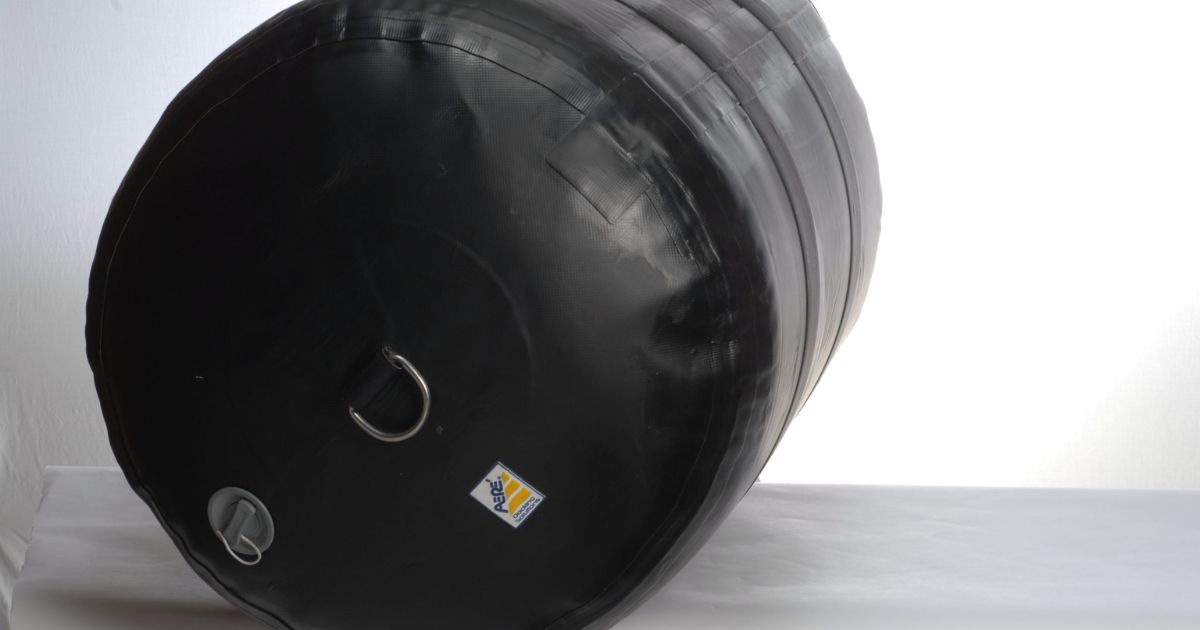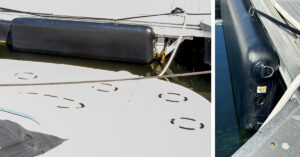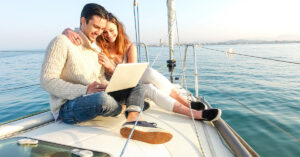Fenders are vital in boating because they cushion and prevent the boat from hitting the docks or other vessels. Boats need fender protection for shock absorption and abrasion. This prevents significant damage to the hull when the boat is anchored, docked, or even rafted.
As a boat owner, you should know how to hang your boat fenders the proper way.
Types of Boat Fenders
If it’s your first time to choose the right fenders for your boat, know that there are several types:
- Cylindrical. This is the most commonly used fender. Its distinctive tube-like look and has an “eye” on one or both ends. It can be hung horizontally with a fender line threaded from one eye to the other or vertically with a fender line through one eye.
- Round. This type of fender looks like a large ball with a teardrop eye and is usually found in large boats such as fishing boats that have flared or concave hulls with a good distance from their docks. You can use these fenders in raft-ups or as buoys.
- Flat. This fender type is common in smaller boats. They are mostly made of foam or can be inflatable fenders. Flat fenders protect the boat once they are tied securely to the boat’s lifelines or hulls.
Different types of docking
As a boat owner, you should know which fenders to use and how to hang them when docking your boat in different situations:
- Floating dock. While your boat is tied to a floating dock, a smooth pier or a bulkhead, you should make sure your fenders are hung vertically or horizontally. It is the most preferred and most practical method to do so. Place each fender just above the water line to prevent them from getting wet. Use at minimum two to three fenders on the docking side, depending on the size of your boat. Make sure that you place one near the boat’s stern, another at the hull’s widest point and another in between the two. If you hang more fenders, damage to your hull is less likely to happen.
- Fixed dock. Tying to a fixed dock where a rising and lowering tide affects the position of your fenders can be tricky. First, make sure that you have long enough fenders that can cover the height as the tide rises and lowers. This will ensure that the boat’s hull is protected every hour of the day. AERE Docking Solutions has fenders up to 96” long, and larger, that can protect your boat in the most extreme tide situations.
You will also have to pay attention to the length of your docking lines that your boat has enough slack to ride with the tide as it gets closer and further from the dock.
Another option is securing your fenders to the dock or pilings. In some situations, this can give you a more stable solution to protecting your boat. - Rafting. If you plan to go rafting with other boat owners, choose fenders that have the largest diameter. Take note that different boats have varied hulls and flare. They also rock in different ways when they are tied together. Ball fenders that have the largest diameter are ideal because they can hang over the boat’s topsides from the cleats or rail. They are also wide enough to prevent the rails of each boat from bumping each other. Boats with huge flare or protruding decks also benefit from these fenders.
Learning what type of fender you need to dock your boat properly at your home port and away will allow you to protect your boat in any type of weather or tide. Your primary type of fender should match the type of docking style you are at most. AERE Docking Solutions can provide you with supplemental fenders to account for all other types of docking situations you need without having the storage space required by non-inflatable fenders.
For tying your fenders properly see our article here.
If you want to know more about fender types, you can click here to speak to one of AERE Marine’s docking solution experts.









